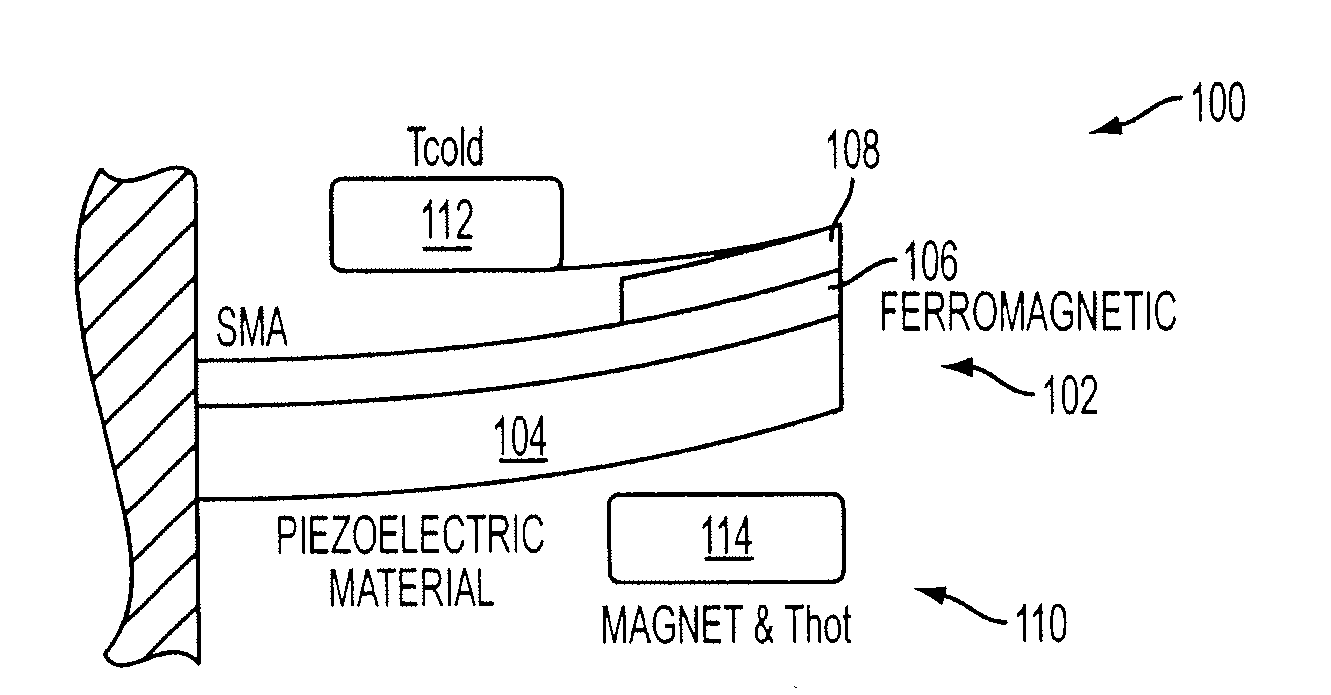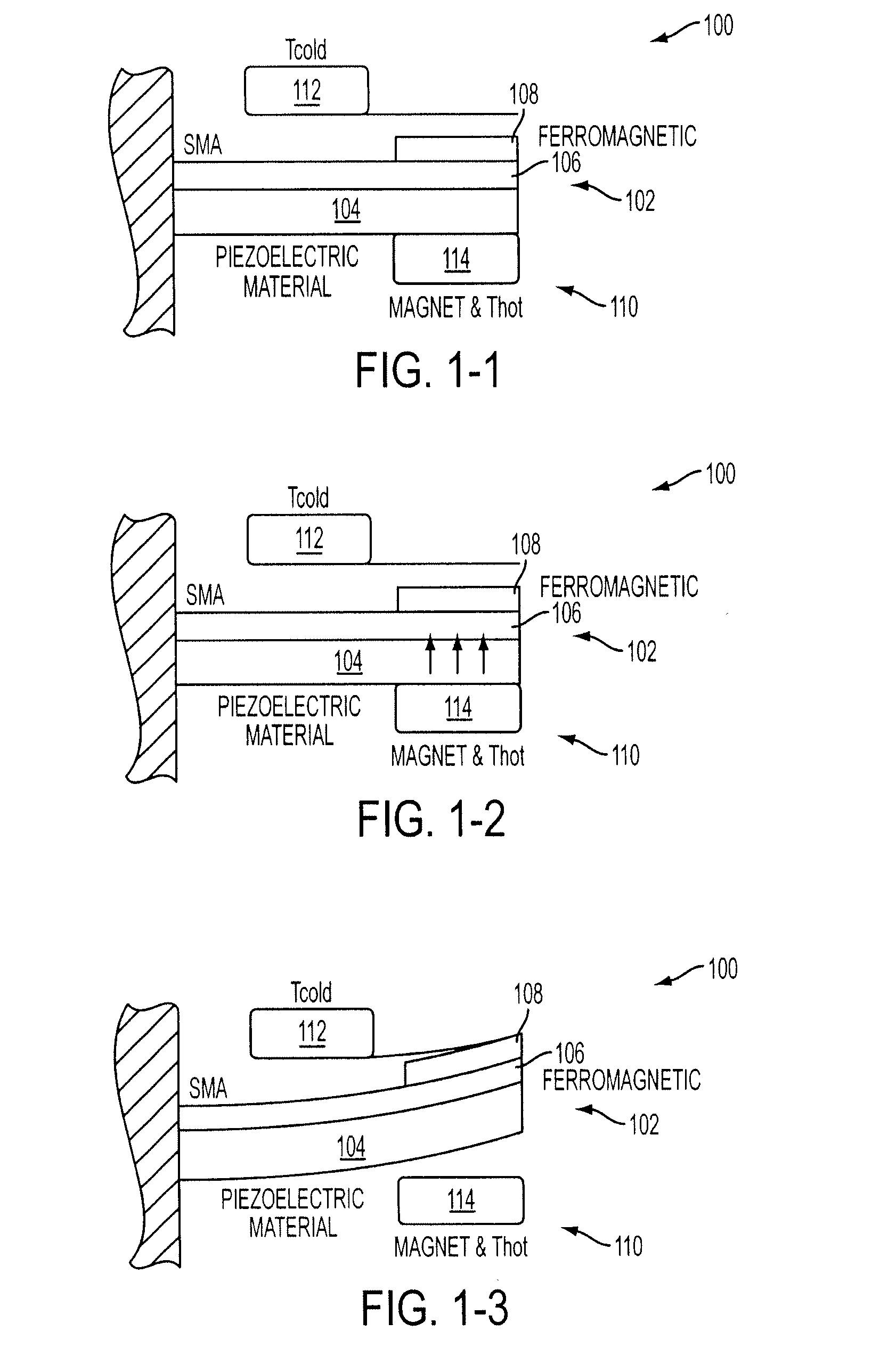Energy harvesting by means of thermo-mechanical device utilizing bistable ferromagnets
a ferromagnetic and thermo-mechanical technology, applied in the direction of mechanical equipment, generators/motors, machines/engines, etc., can solve the problems of small temperature differences that produce little energy and efficiency, and achieve the effects of increasing operational frequency, improving piezoelectric/electroactive element design, and increasing available energy
- Summary
- Abstract
- Description
- Claims
- Application Information
AI Technical Summary
Benefits of technology
Problems solved by technology
Method used
Image
Examples
second embodiment
[0023]FIG. 2-1 shows an energy harvesting device 200 according to the present invention. In FIG. 2-1, the apparatus 200 is composed of a flap 202 with tethers (204, 206, 208, 210) which restrain the motion in the vertical direction only, a piezoelectric layer (212, 214, 216, 218) which is attached to the tethers where stress / strain is generated, and a ferromagnetic layer 220 on flap 202. This deign can allow faster frequency by eliminating the heat transfer though piezoelectric materials which have low thermal conduction coefficients. In addition, this design does not incorporate SMA and relies on the bending of the tether elements for a restoring force. It is believed that this design surpasses any thermoelectric device in the area of efficiency. The limiting efficiency of the best research-level super-lattice thermoelectric material is less than 20% for ΔT<100K. On the other hand, the limiting efficiency of the current invention can potentially reach more than 25%, which is calcul...
third embodiment
[0026]FIG. 3-1 shows an energy harvesting device 300 according to the present invention. In FIG. 3-1, the apparatus 300 is composed of a heat source with a hard magnet 302, a cooling side 304, a ferromagnetic material 306 which has restrained motion in the vertical direction only, a secondary hard magnet 308, and an electromagnetic induction coil 310 which is wrapped around the magnetic path 312. This design can allow faster frequency by eliminating the heat transfer through extra materials. It is also possible to reduce the device cost. In this stage, the temperature of the ferromagnetic material 306 is less than TC, so the ferromagnetic material is attracted to the heat source 302. The magnetic path can be considered as open in this situation.
[0027]In FIG. 3-2, the ferromagnetic material is on the cooling side 304 by a spring mechanism or gravity. In this stage, the temperature of the ferromagnetic material is more than Tc, and it is being cooled. When the magnetic path closes, th...
PUM
 Login to View More
Login to View More Abstract
Description
Claims
Application Information
 Login to View More
Login to View More - R&D
- Intellectual Property
- Life Sciences
- Materials
- Tech Scout
- Unparalleled Data Quality
- Higher Quality Content
- 60% Fewer Hallucinations
Browse by: Latest US Patents, China's latest patents, Technical Efficacy Thesaurus, Application Domain, Technology Topic, Popular Technical Reports.
© 2025 PatSnap. All rights reserved.Legal|Privacy policy|Modern Slavery Act Transparency Statement|Sitemap|About US| Contact US: help@patsnap.com



